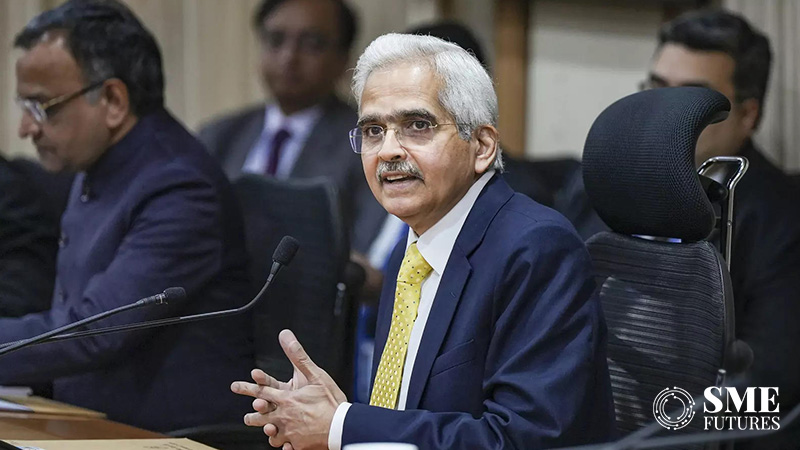The Reserve Bank of India’s (RBI) fight against inflation is far from over, Governor Shaktikanta Das said at the Monetary Policy Committee (MPC) meeting, as per the meeting’s minutes.
The MPC met on April 3, 5 and 6 this year and decided to pause on the repo rate at 6.50 per cent.
In his remarks at the MPC meeting, Das said the cumulative impact of monetary policy actions over the last one year is still unfolding and needs to be monitored closely.
Inflation for 2023-24 is projected to soften, but the disinflation towards the target is likely to be slow and protracted. The projected inflation in Q4:2023-24 at 5.2 per cent would still be well above the target, he said.
Also Read: India inc welcomes Indian Space Policy, ISRO to focus on R&D
“Therefore, at this juncture, we have to persevere with our focus on bringing about a durable moderation in inflation and at the same time, give ourselves some time to monitor the impact of our past actions. I am, therefore, of the view that we do a tactical pause in this meeting of the MPC,” Das said and voted for a pause in rate action.
He also said the focus remains on the withdrawal of accommodation to ensure that inflation progressively aligns with the target, while supporting growth.
“This is a tactical pause and not a pivot or a change in policy direction,” Das said.
The MPC at its recent meeting decided to keep the policy repo rate under the liquidity adjustment facility (LAF) unchanged at 6.50 per cent.
The standing deposit facility (SDF) rate remains unchanged at 6.25 per cent and the marginal standing facility (MSF) rate and the Bank Rate at 6.75 per cent.
The MPC also decided to remain focused on withdrawal of accommodation to ensure that inflation progressively aligns with the target, while supporting growth.
Also Read: Masai School: A start-up revolutionising tech education in India
Arguing for a pause Ashima Goyal, Emeritus Professor, Indira Gandhi Institute of Development Research, Mumbai said as the inflation forecast for FY24 is 5.2 per cent with Q4 at 5.2 per cent, a repo rate at 6.5 per cent implies the real policy rate is greater than one.
“It has already tightened enough to progressively bring inflation towards the target of 4 per cent, with other complementary policies and barring major new shocks. A further rise in real interest rates is best avoided at present since high real rates can trigger a non-linear switch to a low growth path,” Goyal said.
Goyal and Prof. Jayanth R. Varma, Professor, Indian Institute of Management, Ahmedabad were against hiking repo rate at the recent MPC meetings.
Also Read: SMBs turning to online platforms for hiring needs, 70% are first-time digital users: WorkIndia
At the April MPC meeting, Varma said he does not understand the meaning of the term ‘stance’ – withdrawal of accommodation.
“Turning to the stance, I must confess that I fail to comprehend its meaning. My colleagues in the MPC assure me that the language is crystal clear to market participants and others. It may well be that I am the only person who finds it hard to understand,” Varma said.
“But I am unable to reconcile the language of the stance with the simple fact that no further ‘withdrawal of accommodation’ remains to be done since the repo rate has already been raised to the 6.50 per cent level prevailing at the beginning of the previous easing cycle in February 2019. It is of course possible to undertake further tightening, but that would not constitute a ‘withdrawal of accommodation’ by any stretch of the imagination,” Varma added.











